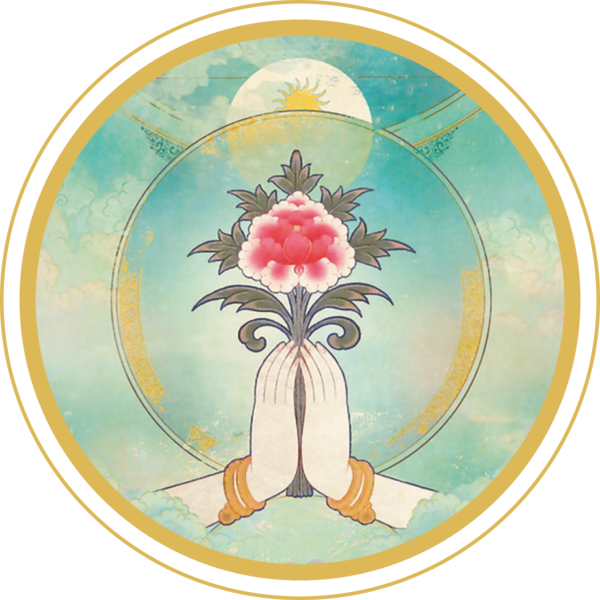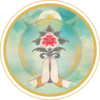
Yoga promises us happiness : ANANDA*
"Our existence of Happiness without reason as True nature".
We yearn from the depths of our being "Atmā", our invisible, immortal, inner essence, for our unconditional happiness.
दर्यणकरकय्दर्रःपरणरःदर्य्नश्दर्रबुद्दम र्त अचरन्त सवने वू चर्ते तण्र दर्तवने चरतय कषककुण्ग्क रदकय सवस्रेानन्तत्रपञ्ककणरदकय सवस्रेाननय चरत्रत्र न हवेत
All that is visible, the 5 bodies, 5 sheaths, which we will see in more detail in the next article, are not the true Self.
They are only a temporary medium through which "I", the tama interacts with the world. They are all mediums for our transactions with the surrounding world. Indeed, whatever objects we own or use, we call them "my" or "mine". And anything we claim as "mine" is only ours in the transaction.
Therefore, what belongs to "me" is not "me" but different from "me".
For example, a car, a pen, a book, etc. that we own and use, we call them "my car", "my pen", "my book", etc. They belong to "me" but are not "myself". They belong to "me" but are not "myself". Thus, if we own a house, we are not the house. We use the house, we own the house, we claim the house but we are not the house.
So in the same way, whenever we claim something as "mine", we are not. We are different from that. Now, if we analyze the way we refer to the kōśāḥ, for example our physical body, we will find that we claim it as our possession, we claim it as "mine"; we say "my body," "my mind," "my intellect," etc.
We often say "I'm tired", "I'm hungry" or "I'm heavy" or "I'm out of shape", what we mean by "my body is tired", "my body is hungry", "my body is heavy", "my body is out of shape" and so on. In all these cases, we are talking about "my body". We do not say "I" the body. We only say "my body". From this, it is clear that we are saying that the "body is mine" and therefore it cannot be me.
Now the question arises, "Who am I?"
All these attributes are known as mine and never as "I". They are only our possessions, but not 'we', the possessor. Therefore, svasmādbhinnaṁ madīyatvēna ñjātam ātmā na bhavati - are different from "I," so, who is I: Atma?
Atma: Then the student asks the teacher (Tarhi); if I am not the body, I am not my mind, I am not my intellect, I am not my physiological system, I am not the walker, I am not the dreamer, I am not the sleeper, if I am not them, if "Atmā" is none of them, then what is this wonderful thing called "Atmā", the Self? Who is I?!!!
The teacher, the Acarya says that Atma is saccidānanda svarūpaḥ.
Saccidānanda is a word composed of three words, namely Sat, Cit and Ananda Svarūpaḥ.
1 - CIT : Awareness
Atma or the real "I" is of the nature of consciousness, which makes the body sentient. Atma is that principle of consciousness by which the body is alive. This bundle of matter called the body is sentient. Sensitive means being able to feel the environment which differentiates the body from an inert desk or an inert chair. The body is also composed of chemicals.
What makes this body alive and sensitive is called consciousness. The next logical question would be "What is this consciousness that makes the body sentient? Vēdāntā analyzes the nature of this consciousness and we need to understand the basic principles regarding the nature of this consciousness. The first lesson is that consciousness is not a property of the body. According to Vēdāntā, unlike height, weight, complexion, etc., which are the properties of the body, sentience or consciousness is not the property of the body.
Similarly, Vēdāntā says that consciousness is not even part of the body. Since hair, nails, skin, etc. are all parts of the body, we cannot conclude that consciousness is a part of the body.
Having understood this, can we say that life or consciousness is generated in the body or brain, just as enzymes are produced in the body, blood is made in the body and cells are created in the body?
Vēdāntā's answer is that consciousness is not even a product generated by the material brain. The brain cannot generate consciousness. The body cannot generate life by itself. In short, life is not a product of matter.
The first important lesson is that consciousness is not a part, property or product of the body.
The second lesson is that consciousness is an independent invisible entity that permeates the body and makes it alive. This converts chemistry into biochemistry.
The third is that this invisible independent consciousness is neither limited, nor circumscribed, nor restricted to the boundaries of the body. It also extends beyond the body, just as electricity is not limited to the boundaries of the fan. And so, according to Vēdāntā, consciousness is limitless, dimensionless, which means that it has no height, no width, no length - that it goes beyond all of these.
All of these belong to the body - just as length belongs to the blades of the fan, not to electricity. So the third lesson is that consciousness has no boundaries. Everything is omnipresent or unlimited. So it is not limited by space.
The fourth lesson is that this invisible and independent consciousness will continue to survive even after death, the death or destruction of the body medium. Just as after the destruction of the light bulb and the light, after the destruction of the fan and its rotation, electricity continues to be present in the circuit. In the same way, after the death of the body, the consciousness continues to exist.
It is therefore a permanent principle; an eternal principle. The fourth lesson is that invisible consciousness is not limited by time.
नजायतरमयतरताकदानच-ननायंभतूताभततातानभयू अजो नतयः शाशततोऽयं परम णो न हनयतर हनयमानर शररर ।। Na jāyatē mriyatē vā kadāci- nnāyaṁ bhūtvā bhavitā vā na bhūyaḥ.
The soul is never born, nor does it ever die; nor does it become a soul after its birth. For it is unborn, eternal, eternal and primitive; even if the body is killed, the soul is not.
And the fifth and final lesson is thatafter death, the surviving consciousness cannot be contacted or recognized by us, not because it is not present, but because the medium of the body no longer exists. The consciousness that arises after the body falls is unrecognizable.
The principle is similar to the examples of the light bulb and the fan given earlier. We only recognize electricity by the gadgets such as the light bulb, the fan, etc. If they fail, we cannot recognize electricity even though it is still present. If they fail, we cannot recognize electricity even though it is still present.
So, if we say that we can recognize this principle by putting our fingers in the socket, the answer would be that we also have to turn on the switch. Here, we can only recognize it through the switch. We all know that electricity is always present in the atmosphere, but are we constantly in a state of shock?
We can only recognize electricity when it is flowing in a medium and not otherwise. This is why in our house, whenever we want to know if there is electricity or not, we check by turning on the light or the fan. So, in the absence of the body, the consciousness is unrecognizable but still existing.
So even after death, the Atma survives. That is why it is called Cit Rūpaḥ, which means "of the nature of Consciousness". By referring to consciousness as 'Atmā', we are claiming consciousness as 'I' the Self. I AM.
2 - SAT: Existence
We have seen that this consciousness does not die when the body dies.
It is eternally present.
It was present in the past; it is present now; and it will be present in the future. The body comes and goes, but not this Consciousness. In Sanskrit, everything that is eternal is called Sat orSatyaṁ.
Consciousness being eternal, it is called Sat.
Such is the meaning of kālatrayē'pi tiṣṭhatīti iti sat or, in other words, trikālē api tiṣṭhatīti iti sat. Trikālaṁ means the three periods of time, namely the past, present and future.
In these three periods of time; tiṣṭhatīti - that which remains and continues to be - is neither the body nor the Mind; but it is the Invisible, Independent Consciousness.
Thus, ātmā is not only Cit rūpaḥ but also Sat rūpaḥ.
3- ANANDA : Unlimited Happiness
The consciousness, I, is not limited by the limits of the body.
I, the Consciousness, is unlimited and pervasive.
In Sanskrit, the omnipresent principle is called Anantaḥ.
Anantaḥ or anantaṁ, means unlimited, without limit or in other words Vedāntik, Pūrṇaḥ, which means full and complete.
This pūrṇatvaṁ or unlimited, is always experienced in the form of Anandā.
Ananthā is always experienced as Anandā.
Whenever our minds are full, whenever we lack nothing, we have a sense of completeness.
Conversely, whenever we lack something in life, it is expressed in pain.
Sorrow is thus defined as a limitation and Happiness as an Unlimited.
So Anantā means "Ananda." "I lack nothing in life."
I lack nothing in life," he says, not the body; not the mind; not the intellect (they have infinite limits), but Atma.
Atma lacks nothing.
That is why " Ananda" is Sukha svarūpaḥ: of the nature of Happiness, the deep feeling of fullness in all our spaces of Body and Emotions .
In this state, if some asked us, "What do you want? "
Our answer would be, "I don't want anything at all because I am pūrṇaḥ, complete in myself, with myself, by myself."
OM Tat Sat - Anandi
*Content from the Yoga and Vedanta retreats and Module 2 of the Teacher Training Course.


